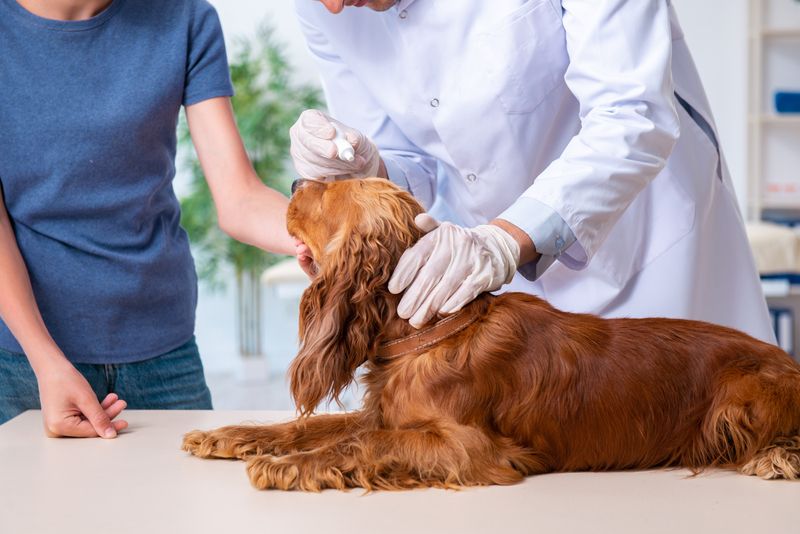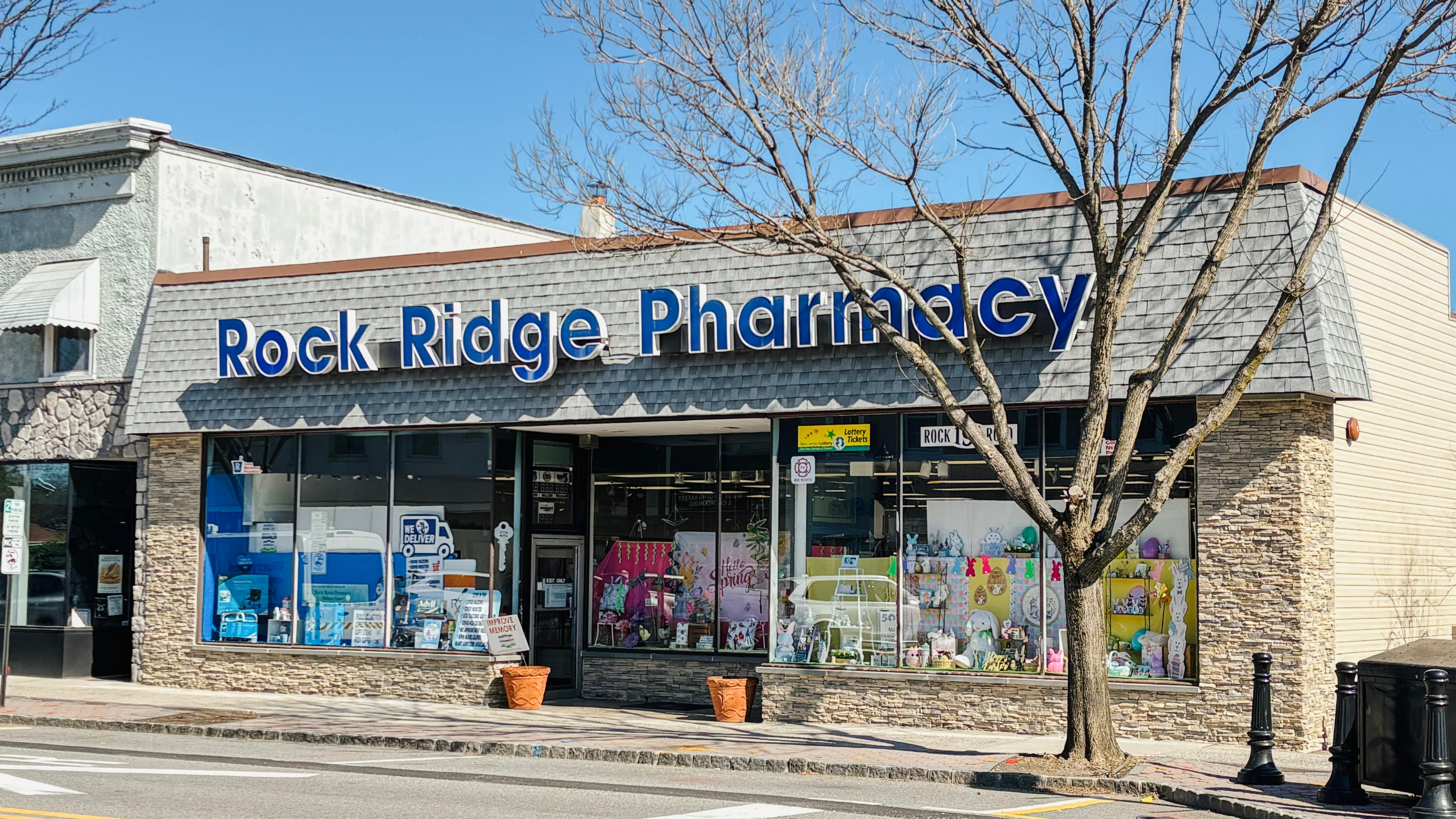Veterinary Ophthalmic Care • Prescription Required
Tacrolimus Eye Drops for Pets
Custom-compounded immunosuppressive solutions for pets with refractory dry eye (KCS), severe pannus, and complex inflammatory eye diseases.
Veterinarian-prescribed • Pharmacist-guided • Pet-approved
What Is Tacrolimus?
Tacrolimus is a powerful immunosuppressant, often considered 10–100 times stronger than cyclosporine, with superior corneal penetration.
It is highly effective for pets with refractory dry eye (KCS), severe autoimmune eye conditions, or cases that do not respond to standard therapy.
Our tacrolimus drops are compounded through a PCAB-accredited partner in a USP <797>-compliant, ISO-class sterile facility, ensuring purity and consistency.

Why Use Compounded Tacrolimus?
Tacrolimus is rarely available as a veterinary ophthalmic product. Compounding ensures safe, effective, and pet-friendly treatments for complex eye conditions.
Custom Concentrations
Available in 0.01%–0.3%, tailored to the severity of your pet’s condition.
Preservative-Free
Critical for sensitive or inflamed eyes, minimizing irritation during long-term therapy.
Comfortable Base
Formulated in gentle aqueous or tear-like bases for optimal absorption and tolerance.
Superior Potency
10–100× stronger than cyclosporine, effective in resistant or severe cases of dry eye and pannus.
Pharmacist Expertise
Compounded under sterile, USP <797> conditions for potency, safety, and reliability.
How Tacrolimus Works
Tacrolimus suppresses immune overactivity in the eye, helping restore tear production and reduce damaging inflammation in severe or resistant cases of dry eye and pannus.
Suppresses T-Cells
Blocks T-lymphocyte activation, reducing autoimmune attacks on tear glands and ocular tissues.
Superior Penetration
Provides deeper corneal and conjunctival absorption than cyclosporine, reaching stubborn inflammation.
Longer Duration
Often allows for less frequent dosing while maintaining therapeutic effect.
Restores Tear Production
Protects and supports tear gland function, improving lubrication and comfort in chronic dry eye.
| Medication | Strength | Form | Base | Primary Use |
|---|---|---|---|---|
| Prednisolone Acetate | 1.25% | Eye Drops (15ml) | Aqueous Suspension | Eye inflammation, allergies |
| Prednisolone Acetate | 1.5% | Eye Drops (15ml) | Aqueous Suspension | Severe eye inflammation |
Understanding Tacrolimus Base Options
Different carriers affect comfort, absorption, and overall treatment cost
Aqueous (Water-Based)
Lightweight and comfortable for sensitive eyes. Most economical option, but may require more frequent dosing.
MCT Oil Base
Provides enhanced absorption and longer contact time. Well-tolerated, balancing comfort and effectiveness.
Corn Oil Base
Maximizes retention on the eye surface, often allowing twice-daily dosing. Higher cost due to specialized prep.
Emulsion
Delivers superior corneal penetration and even coverage for complex autoimmune cases. Premium pricing reflects advanced formulation.
How to Give the Drops
Step-by-step guide for safe application
Dosage Guidelines & Cost Considerations
Typical Dose
1 drop in affected eye(s) 2–3 times daily.
Treatment Duration
Evaluate response after 2–4 weeks of use.
Maintenance Therapy
Often reduced to 1–2 times daily once stabilized.
Monthly Cost
Varies by base & frequency — call Rock Ridge Pharmacy for details.
If You Miss a Dose
Give when remembered, but allow at least 8 hours between doses.
Long-Term Use
Most pets require ongoing therapy, but at reduced frequency over time.
Storage & Safety Information
Proper storage and careful monitoring help ensure Tacrolimus ophthalmic drops remain safe and effective.
Storage & Handling
- Keep refrigerated: 36–46°F (2–8°C).
- Protect from light in original amber container.
- Do not freeze; avoid temperature extremes.
- Replace cap tightly after each use.
- Check expiration date — shorter stability than cyclosporine.
Safety & Side Effects
Common mild effects: stinging, tearing, mild redness, or brief vision changes after application.
Contact your vet if: irritation persists beyond a week, discharge becomes green/yellow, or vision worsens.
Treatment Timeline & Cost Planning
Week 1–2
Initial response evaluation with noticeable reduction in dryness and irritation.
Cost: Highest due to full frequency dosing.
Week 3–4
Improvement becomes more consistent; inflammation begins to subside.
Cost: Continued full dosing, may begin tapering frequency.
Week 6–8
Maximum therapeutic effect achieved; tear production often improves.
Cost: Reduced frequency dosing lowers monthly expense.
Long-Term
Ongoing management for chronic dry eye or autoimmune conditions.
Cost: Maintenance therapy typically $40–75/month.
Veterinary Monitoring
Follow-ups every 2–4 weeks at first, then every 3–6 months.
Additional cost: Veterinary exam fees.

Why Choose Rock Ridge Pharmacy for Veterinary Eye Drops?
- PCAB-accredited & USP <797> sterile lab ensuring safety and quality.
- Veterinary compounding expertise trusted since 1950.
- Custom dosing & formulations for different species and conditions.
- Fast turnaround — most prescriptions ready in 1–2 business days.
- Pharmacist support for storage, use, and follow-up care.
Rock Ridge Pharmacy works with veterinarians and pet owners to provide safe, sterile, and personalized ophthalmic solutions backed by decades of trusted care.
FAQs About Tacrolimus Eye Drops at Rock Ridge Pharmacy
Do I need a prescription?
Yes. Tacrolimus is a potent immunosuppressive medication available only with veterinary prescription and requires careful monitoring.
How much will this cost per month?
Monthly costs range from $65–125 initially, often reducing to $40–75 for maintenance therapy. Higher than cyclosporine due to medication potency and specialized handling.
Does pet insurance cover tacrolimus?
Most pet insurance plans cover prescription medications when medically necessary. Tacrolimus is often covered as a specialty medication for refractory conditions.
How quickly does tacrolimus work compared to cyclosporine?
Tacrolimus often shows results faster — sometimes within 1–2 weeks versus 4–6 weeks for cyclosporine, due to its superior potency.
Is tacrolimus safe for long-term use?
Yes, when properly monitored. However, it requires more frequent veterinary check-ups initially due to its potency.
Why is tacrolimus more expensive than cyclosporine?
Higher raw material costs, specialized handling requirements, enhanced quality testing, and lower concentrations requiring precision compounding contribute to increased pricing.
What if my pet doesn't respond to tacrolimus?
Our pharmacist will work with your veterinarian to consider concentration increases, base changes, or combination therapy options. Additional consultation included.
Can tacrolimus be used with other eye medications?
Yes, but timing is critical. Wait at least 10–15 minutes between medications. Our pharmacist provides specific sequencing instructions.
Is preservative-free important for tacrolimus?
Extremely important. Tacrolimus is used for severe inflammatory conditions where preservatives can worsen irritation. This may add $15–25 to base cost but is often essential.
What makes tacrolimus "more potent" than cyclosporine?
Tacrolimus is 10–100 times more immunosuppressive, has superior tissue penetration, and longer duration of action, making it effective where cyclosporine fails.
Can I switch from cyclosporine to tacrolimus?
Yes, but this requires veterinary supervision. There may be a transition period, and dosing schedules will likely change.
What if I accidentally get tacrolimus in my eye?
Rinse immediately and thoroughly with clean water. Contact your physician — tacrolimus is more potent than cyclosporine and requires medical evaluation.
How should I store tacrolimus during travel?
Use an insulated cooler with ice packs. Tacrolimus is more temperature-sensitive than cyclosporine. We provide specialized travel instructions.
What if my pet seems to have side effects?
Contact your veterinarian immediately. Due to tacrolimus's potency, side effects require prompt evaluation and possible treatment adjustment.
Are there ways to reduce the cost?
Lower concentrations when appropriate, optimal base selection for your pet's needs, and transitioning to maintenance dosing can reduce long-term costs significantly.
Can tacrolimus be compounded with other medications?
Sometimes, but this requires specialized expertise. Our pharmacist can discuss combination options with your veterinarian.
What payment options are available for expensive treatments?
We accept CareCredit, offer payment plans for long-term treatments, and can work with pet insurance for direct billing when possible.
